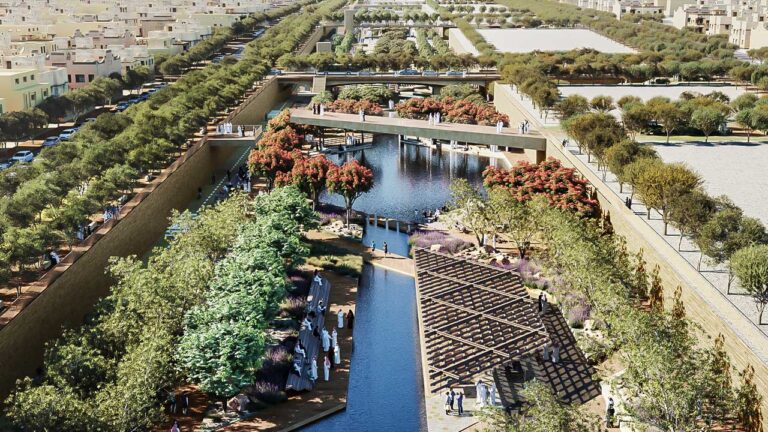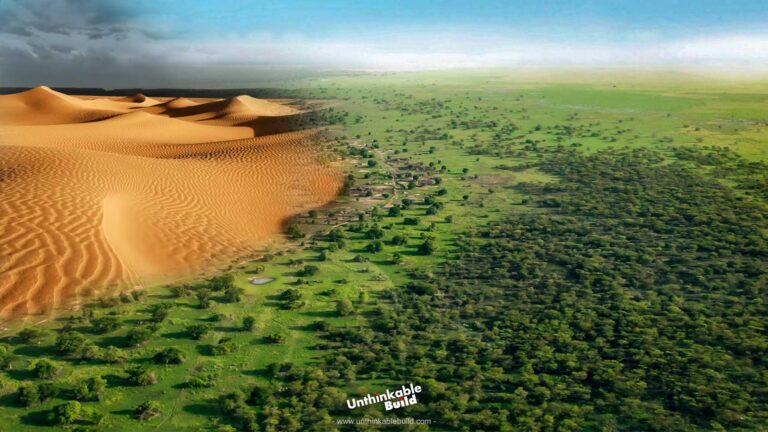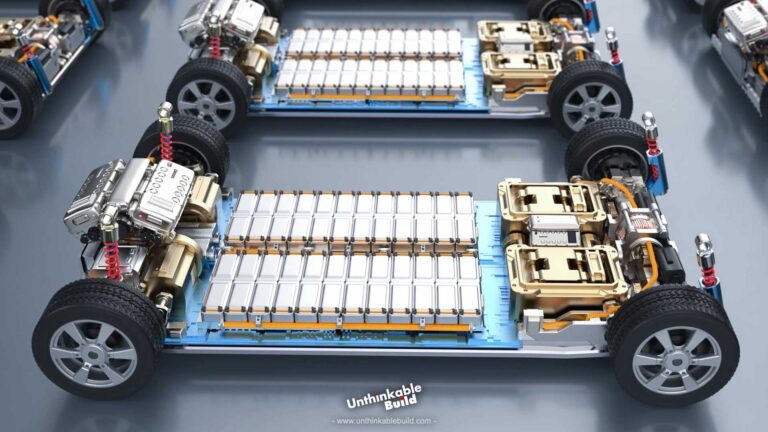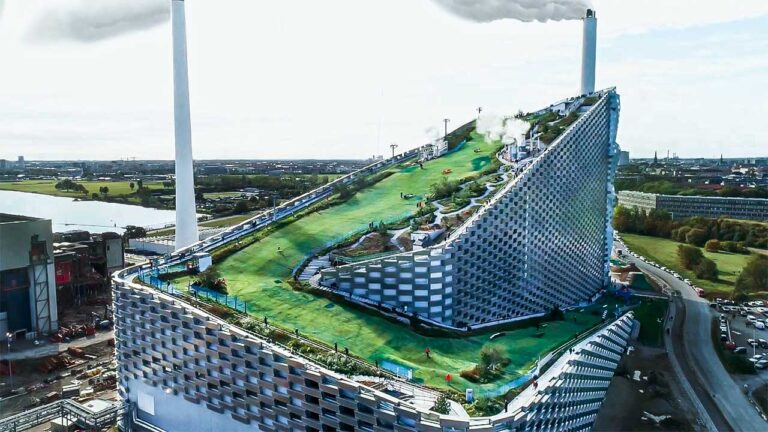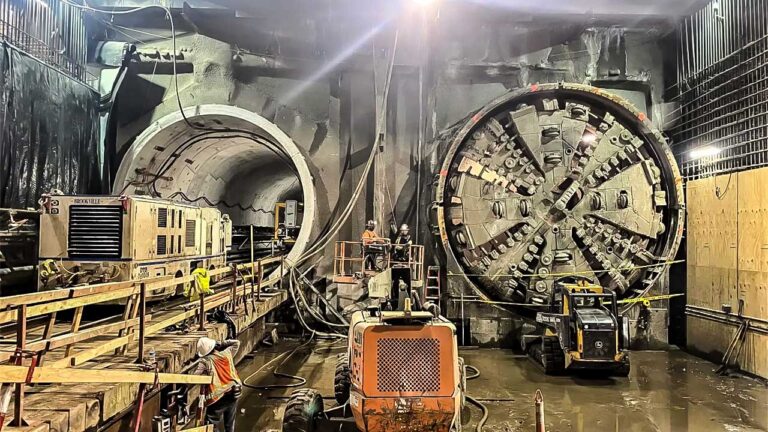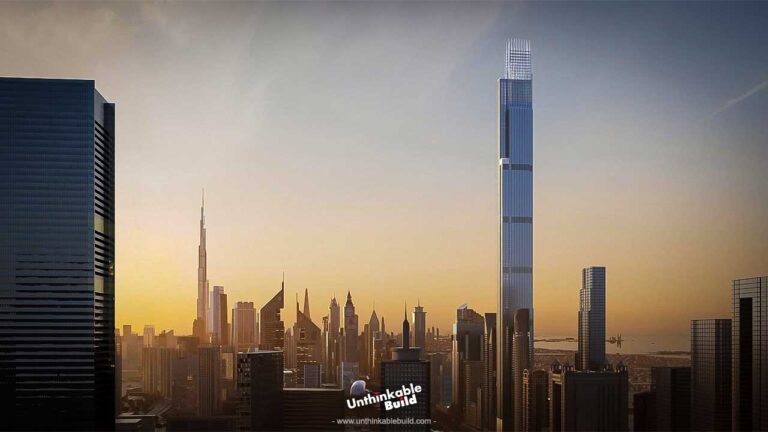Iraq’s $24 Billion Mega-Port: Challenging the Suez Canal?
Imagine a place so small, yet so powerful, it could change the way the world trades forever. A place that could challenge one of the most iconic shipping routes in history—the Suez Canal. Sounds impossible, right? Well, what if I told you this place already exists? Right here, in Iraq. Welcome to the Al Faw Peninsula—a tiny strip of land with a MASSIVE vision. This is Iraq’s only coastline, and it’s about to become the heart of one of the most ambitious infrastructure projects on the planet. But here’s the question: Can this project really compete with the Suez Canal? And more importantly, can it transform Iraq into a global trade superpower?
We’re talking about a port so big; it’s being built on an artificial island. A ‘dry canal’ that stretches 2,000 kilometers, connecting the Persian Gulf to Turkey. And engineering solutions so innovative, they’re rewriting the rules of modern infrastructure. But here’s the catch—this isn’t just about ships and cargo. This is about Iraq’s future, and maybe even the future of global trade.
So, are you ready to dive into the story of how a war-torn nation is betting everything on a project that could change the world? Stick around, because this is the Al Faw Peninsula like you’ve NEVER seen it before. Let’s get started!
Also Read: Why These Mega Cities Were Never Built?
Let’s start with why the Al Faw Peninsula is such a big deal. This small piece of land in southern Iraq is Iraq’s ONLY coastline, and it sits right at the edge of the Persian Gulf—one of the most important waterways in the world. For decades, Iraq’s access to global trade has been limited, but that’s about to change. The Iraqi government has a bold plan: to turn Al Faw into a global trade hub, and they’re spending billions to make it happen.
The centerpiece of this plan is the Al Faw Grand Port, one of the largest infrastructure projects in the world. This isn’t just any port—it’s being built on an artificial island, with container terminals that can handle the biggest ships on the planet. We’re talking about neo-panamax ships, which can carry over 14,000 containers each! To put that into perspective, if you lined up all those containers, they’d stretch longer than 85 kilometers. That’s how massive this project is.
But building something this big isn’t easy—or cheap. The estimated cost of the Al Faw Grand Port is around $7 billion, and that’s just for the first phase. The project is being developed in stages, with the final goal of handling 99 million tons of cargo every year. That’s enough to make it one of the top 10 ports in the world.
Now, let’s talk about the challenges. Building a port of this scale in a country like Iraq isn’t just about money—it’s about overcoming decades of conflict, limited resources, and tough geography. For example, the port needs to be protected from something called “scour,” which is when the force of massive ships erodes the seabed. To solve this, engineers are using concrete mattresses instead of traditional rock armor. These mattresses are faster to install, cheaper, and just as effective.
Another huge challenge is dredging—digging out the seabed to create deep-water channels for ships. Over 100 million cubic meters of sand and sediment need to be moved to make this happen. And to protect the port from waves and sediment buildup, Iraq is building the world’s longest breakwater, stretching over 14 kilometers.
But the Al Faw Grand Port is just one part of the story. The real game-changer is the Iraq Development Road, also known as the “Dry Canal.” This is a 2,000-kilometer network of highways and railways that will connect Al Faw to Turkey, passing through major Iraqi cities like Basra, Baghdad, and Mosul. The cost? Another $17 billion.
Why is this so important? Because it creates a land-based alternative to the Suez Canal. Right now, ships traveling between Asia and Europe have to go through the Suez Canal, which is often overcrowded and faces risks like piracy. The Dry Canal could cut shipping times by up to 10 days, making it a faster and safer option for many traders.
The project has already seen some major milestones. In 2020, Iraq signed agreements with international companies to start construction, and in 2023, the first phase of the port began operations. But there’s still a long way to go. The entire project is expected to take 10 to 15 years to complete, and it will require not just money, but also stability and cooperation in a region that’s seen decades of conflict.
So, what’s the big picture here? If successful, the Al Faw Grand Port and the Iraq Development Road could transform Iraq from a war-torn nation into a global trade powerhouse. It could create thousands of jobs, attract billions in foreign investment, and give Iraq a seat at the table in the world of international trade.
But here’s the thing—this isn’t just about Iraq. It’s about creating a new route that could change how the world trades. And that’s why the Al Faw Peninsula is more than just a project—it’s a vision for the future.
Now, let’s talk about what this means for the future of Al Faw, Iraq, and the world. Stay with me, because this is where things get even more interesting.
So, what’s next for the Al Faw Peninsula and Iraq’s ambitious vision? Let’s dive in.
Also Read: $4.5 Billion Gamble: Will Mphanda Nkuwa Mega-Dam Power Africa’s Future?
Once fully completed, the Al Faw Grand Port will be a massive hub with container terminals, industrial zones, and urban developments. It’s not just a port—it’s a blueprint for Iraq’s economic future, designed to handle millions of tons of cargo annually and compete with the world’s busiest ports.
But the real game-changer is the Iraq Development Road, or the “Dry Canal.” This 2,000-kilometer network of highways and railways will connect Al Faw to Turkey, offering a land-based alternative to the Suez Canal. Why does this matter? Because the Suez Canal, while iconic, faces issues like overcrowding and piracy. The Dry Canal could cut shipping times by up to 10 days, making it a faster, safer option for global trade.
The benefits don’t stop there. This project could open up new opportunities for landlocked countries in the region, turning Iraq into a central trade hub for the Middle East and beyond. It’s a chance for Iraq to diversify its economy, create thousands of jobs, and attract billions in foreign investment.
But let’s be real—this isn’t going to be easy. The project comes with a $24 billion price tag, and Iraq still faces challenges like political instability and security risks. Competing with the Suez Canal, which has over 150 years of history, won’t be simple either.
Yet, the potential rewards are enormous. If successful, this project could transform Iraq from a war-torn nation into a global trade powerhouse. It’s a bold vision, but one that could reshape the future of global trade.
So, will the Al Faw Peninsula succeed? Only time will tell. But one thing’s clear: this project is a symbol of hope and ambition. It’s a reminder that even the biggest dreams can become reality with determination and innovation.
What do you think? Can Iraq’s mega port challenge the Suez Canal?


